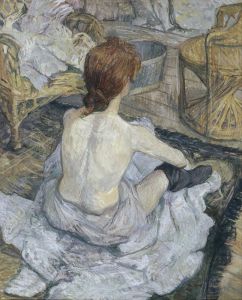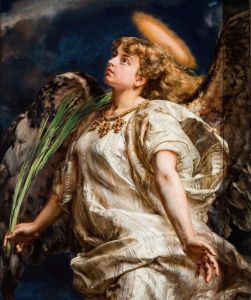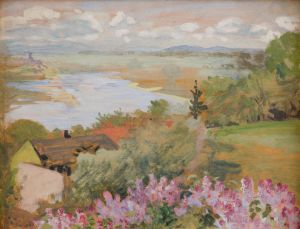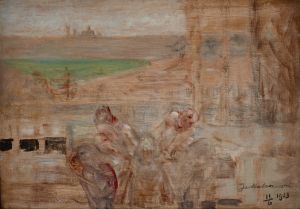
On the veranda
A hand-painted replica of Jacek Malczewski’s masterpiece On the veranda, meticulously crafted by professional artists to capture the true essence of the original. Each piece is created with museum-quality canvas and rare mineral pigments, carefully painted by experienced artists with delicate brushstrokes and rich, layered colors to perfectly recreate the texture of the original artwork. Unlike machine-printed reproductions, this hand-painted version brings the painting to life, infused with the artist’s emotions and skill in every stroke. Whether for personal collection or home decoration, it instantly elevates the artistic atmosphere of any space.
Jacek Malczewski, a prominent Polish painter, is known for his significant contributions to the Symbolist movement in art. One of his works, "On the Veranda," exemplifies his unique style and thematic focus. Malczewski was born in 1854 in Radom, Poland, and he became a central figure in Polish art at the turn of the 20th century. His works often explore themes of Polish identity, mythology, and existential reflection, which are evident in his diverse body of work.
"On the Veranda" is a painting that captures Malczewski's characteristic blend of realism and symbolism. While specific details about the painting's creation, such as the exact date and context, are not widely documented, it is consistent with Malczewski's broader oeuvre, which frequently features introspective and allegorical elements. His paintings often include figures in contemplative poses, set against richly detailed backgrounds that invite viewers to ponder deeper meanings.
Malczewski's art is deeply rooted in the cultural and political milieu of Poland during his lifetime. The late 19th and early 20th centuries were a period of significant upheaval and transformation for Poland, which was partitioned and under foreign rule. Malczewski's work often reflects a sense of national identity and a longing for independence, themes that resonate throughout his paintings. His use of symbolism can be seen as a means of expressing complex ideas about the human condition and the Polish experience.
In "On the Veranda," Malczewski likely employs his typical symbolic language, using the setting and figures to convey a narrative or emotional state. Verandas, as architectural elements, often suggest a transitional space between the interior and exterior, the private and public, which could metaphorically relate to themes of transition or introspection. However, without specific details about the painting's composition or subject matter, these interpretations remain general observations based on Malczewski's known artistic tendencies.
Malczewski's influence extends beyond his paintings; he was also a respected teacher and mentor to younger artists. His role in the development of Polish art was significant, as he helped to shape the direction of modern Polish painting. His works are celebrated for their technical skill, imaginative compositions, and the depth of their symbolic content.
Today, Jacek Malczewski is regarded as one of Poland's most important artists. His paintings are held in high esteem and are featured in major Polish museums, including the National Museum in Warsaw and the National Museum in Kraków. "On the Veranda," like many of his works, continues to be studied and appreciated for its artistic merit and the insight it provides into the cultural and historical context of its time.
In summary, while specific information about "On the Veranda" is limited, the painting is a testament to Jacek Malczewski's enduring legacy as a master of Polish Symbolism. His ability to weave complex themes into his art ensures that his work remains relevant and thought-provoking for contemporary audiences.


















